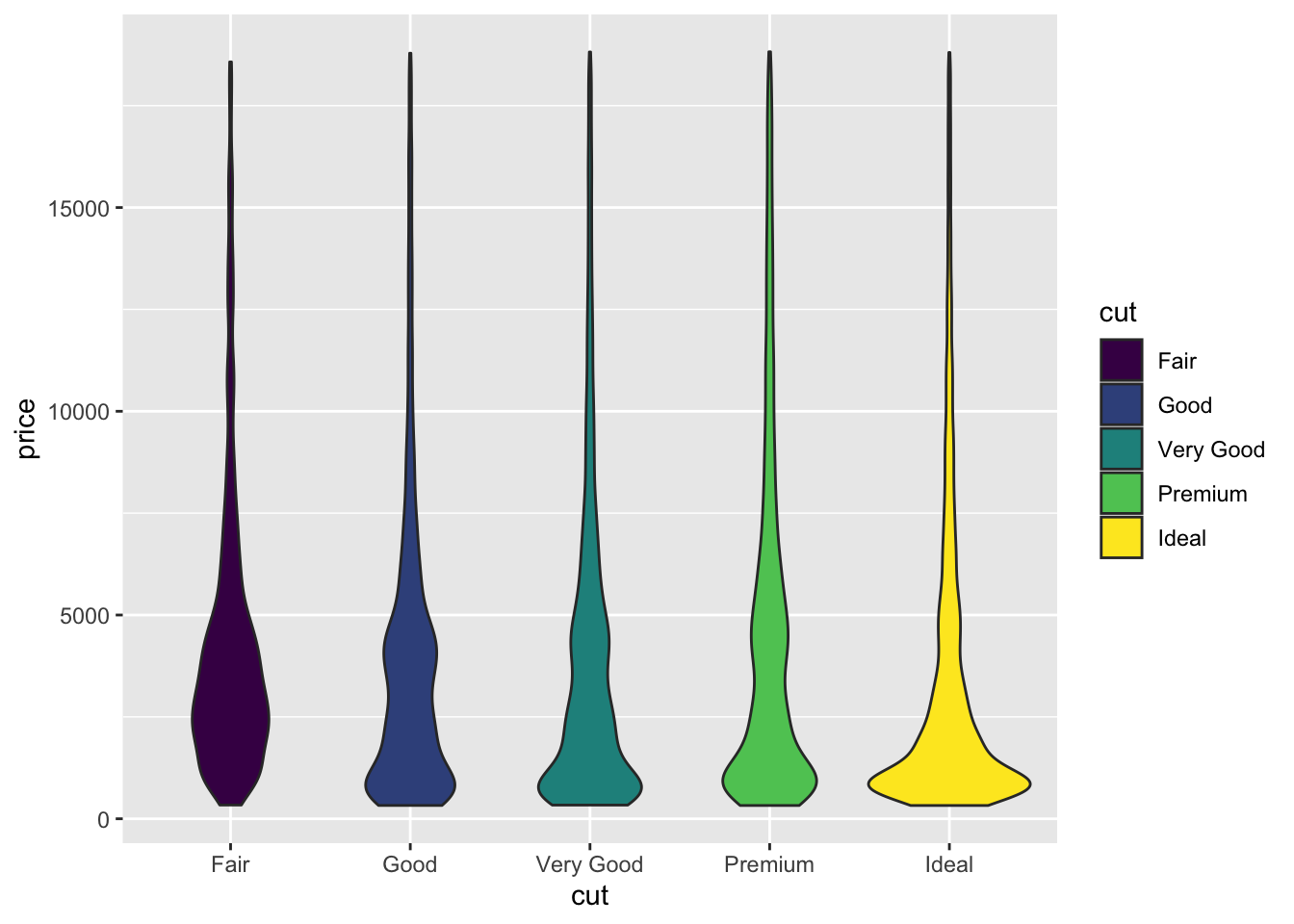Overview #
A violin plot is used to display the distribution of numerical variables. The width along the cross section of any part of the plotted violin represents how many data points there are within that given section.
A single violin plot can display the distribution of numerical variables for multiple categories.
Data #
A violin plot requires at least one categorical variable and one numerical variable.
R #
Let’s make a violin plot in R with the ggplot2 package. We’ll also use tooling from tidyverse to manipulate the data.
library(tidyverse)
library(ggplot2)
For this example, we’ll use the built in diamonds dataset.
## # A tibble: 53,940 × 10
## carat cut color clarity depth table price x y z
## <dbl> <ord> <ord> <ord> <dbl> <dbl> <int> <dbl> <dbl> <dbl>
## 1 0.23 Ideal E SI2 61.5 55 326 3.95 3.98 2.43
## 2 0.21 Premium E SI1 59.8 61 326 3.89 3.84 2.31
## 3 0.23 Good E VS1 56.9 65 327 4.05 4.07 2.31
## 4 0.29 Premium I VS2 62.4 58 334 4.2 4.23 2.63
## 5 0.31 Good J SI2 63.3 58 335 4.34 4.35 2.75
## 6 0.24 Very Good J VVS2 62.8 57 336 3.94 3.96 2.48
## 7 0.24 Very Good I VVS1 62.3 57 336 3.95 3.98 2.47
## 8 0.26 Very Good H SI1 61.9 55 337 4.07 4.11 2.53
## 9 0.22 Fair E VS2 65.1 61 337 3.87 3.78 2.49
## 10 0.23 Very Good H VS1 59.4 61 338 4 4.05 2.39
## # ℹ 53,930 more rows
Since a violin plot requires a categorical variable and a numerical variable, let’s go with the cut (categorical) and the price (numerical).
Let’s plot a very simple violin plot using cut and price.
ggplot(
data = diamonds,
aes(
x = cut,
y = price,
fill = cut
)
) +
geom_violin()

Let’s break that down a bit.
data = diamonds defines the dataset we’re using here.
aes(...) defines the aesthetic mappings. Within aes, we’re basically saying that the x-axis should be used for the cut, the y-axis should be used for the price, and we’ll fill the plots by color based on the cut.